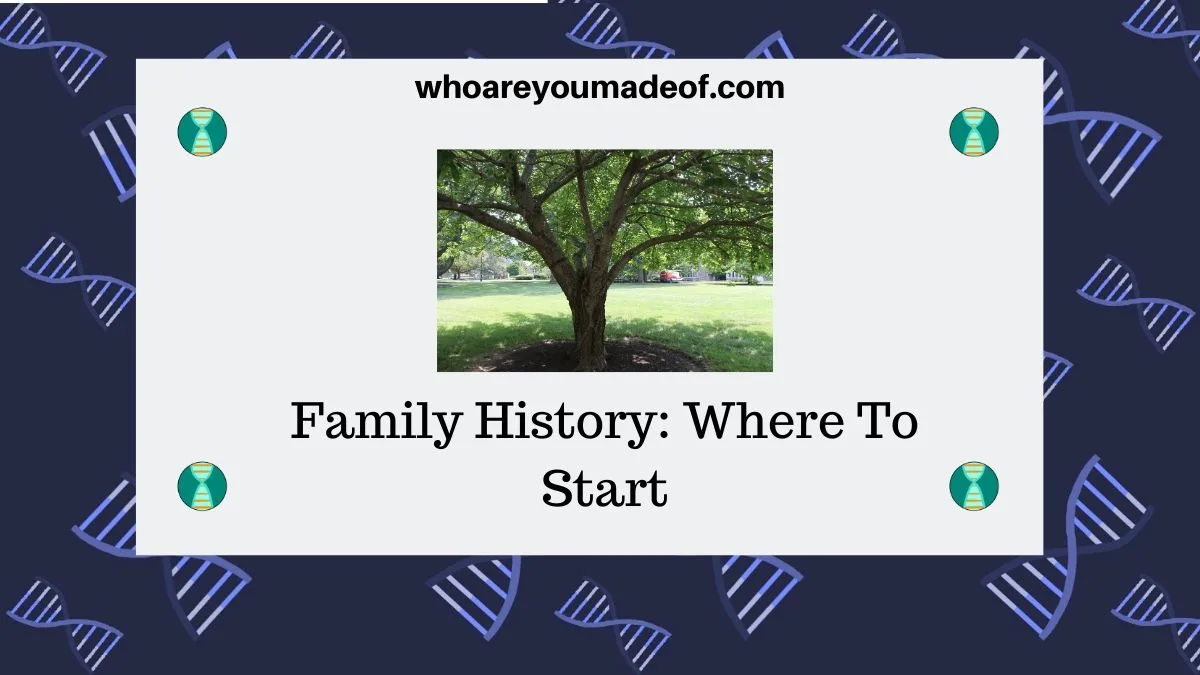Are you ready to get started learning about your family history? In this post, you will find the best tips for a beginning family tree researcher.
Learning about your family's unique history is fun on many levels. You will certainly find many of your ancestors to be interesting and exciting.
I'm very glad that you have decided to learn how to get started researching your family, and I hope that you enjoy the process as much as I have. It has become one of my favorite hobbies.
Below, you can read ten ways to get your family history research started successfully.

Decide what you want to learn
The first thing that you should do when you start to think about researching your family's history is decide what you would like to learn.
When I first started learning about my ancestors, I wanted to learn where they all came from. I felt pretty sure that none of my ancestors were originally from North America.
But, where were they from?
You might have similar questions, or you might be curious about a particular ancestor or family line. Perhaps you have heard family stories or rumors, and you want to do research to learn more about them.
Set easy research goals
Instead of looking at your family tree as a whole, it's best to pick small research projects that will be easy to accomplish.
For example, even if you know that you eventually want to know which part of Ireland your great-great grandfather came from, or why your great-great-great grandmother left Mexico to live in Texas, you still need to start your research with generations closer to you.
This means that setting small goals, like figuring out where your great-grandfather was born, or finding the names of his parents, is the best way to proceed.
Pick a place to build your family tree
There are many places online where you can build your family tree for free. If you prefer, you can even download special family tree building software to your computer.
Even if you are just curious about one aspect of your family, I recommend taking the time to set up a basic family tree.
It's the best way to keep your research organized and to help you visualize where your ancestors are on your tree in relation to you and your other family members.
Interview your older relatives
Once you have set your research goals and set up a basic family tree, it is time to start your research. The first place to start learning is with your older relatives.
Your family members are the best source of the information that you need to start your family tree. When you speak with your relatives, make sure to take good notes.
Even if it's not possible to speak with your parents and grandparents, you may have older siblings, cousins, and aunts or uncles to speak with. Any little detail about your family's history can be important in the future.
Find old family photographs and documents
Old photographs and documents are a great place to start digging in to your family's past.
Who are the names written on the back of the photographs? Who did the documents belong to, and why were they important?
Most importantly, how do those photos and documents help tell your family's story? Finding out who is in those old photos is a great way to get started on your research.
You can often get original photographs or copies from your older relatives, or the person who has been unofficially designated as your family history's "keeper".
Research a little at a time
If you spend just a little time on your research each day, or every time you sit down to search, you won't feel overwhelmed.
As they say, Rome wasn't built in a day, and neither was a well-researched family tree.
Some people like to set a time limit of thirty minutes per research session so they don't lose track of time or get too exhausted.
Find your grandparents in the census
Most of us are familiar with details about our parents, but we might not know everything about our grandparents. Our grandparents are the key to our ancestors further back in our tree.
If you live in a country where national censuses are taken at regular intervals, you might be able to find your grandparents in the most recent census that has been made available to the public.
For example, the United States has done a national census every ten years since 1790. The most recent census year available for the public is the 1940 census.
Most Americans can find parents, grandparents, and maybe even great-grandparents in the US 1940 Federal Census. The information in the census forms will help us learn enough to direct our research going back another generation.
Ask your cousins
Once you have established some knowledge of your family tree, you might want to consider reaching out to first and second cousins.
Those family members descended from your grandparents and great-grandparents might have helpful information, records, and photographs that can help you in your quest to learn about your family.
Plus, you might find that some of your cousins are also interested in family history. It's always great to have a research partner!
Google your ancestors
If you haven't tried it yet, why not "Google" one of your ancestors? You might find that they show up in an online family tree that someone else has built.
They may have also been mentioned in books or newspapers.
You never know what you will learn until you try.
Try Googling your ancestors name along with their year and state of birth for best results.
Share what you learn with your family
As you explore your family tree, be sure to share the things that you learn with your family. It will help your relatives share in the excitement of learning about your common ancestors, but it might also help you in your research.
I have always found that details and stories that I share with relatives "jog" their memory and they often reveal something to me that they had previously forgotten about.
Conclusion
I hope that this post has helped you get a good idea about where to start your family history research. If you have any ideas of your own that you would like to share, or if you have questions, please join us in the discussion below.
Thanks for stopping by today!

